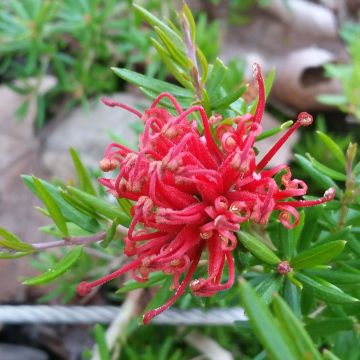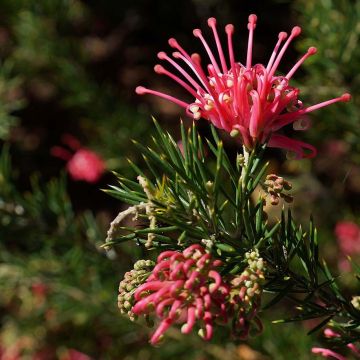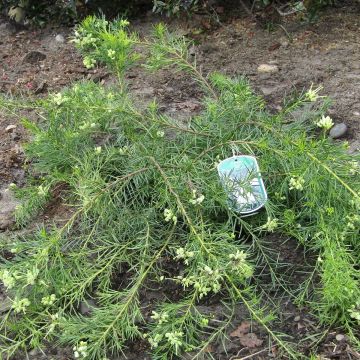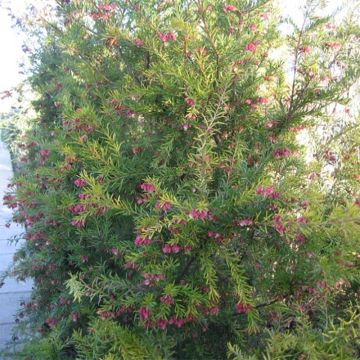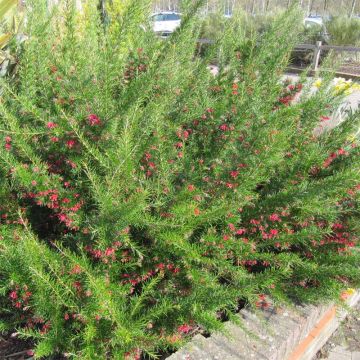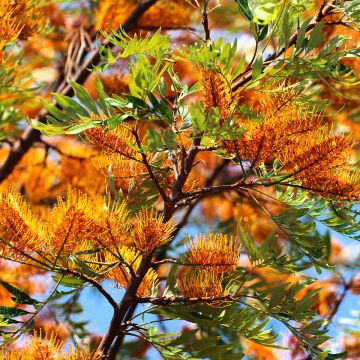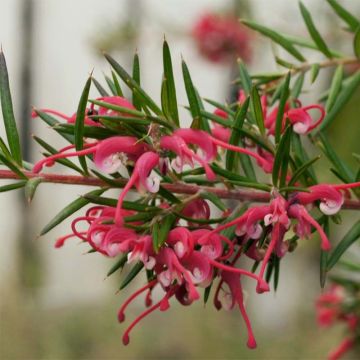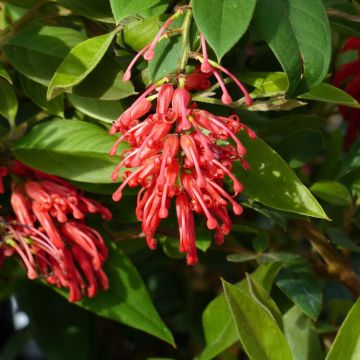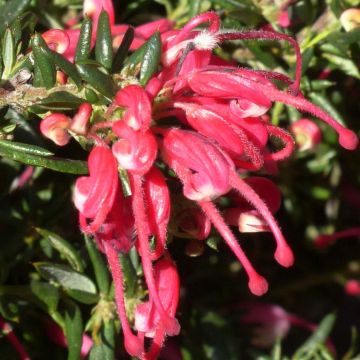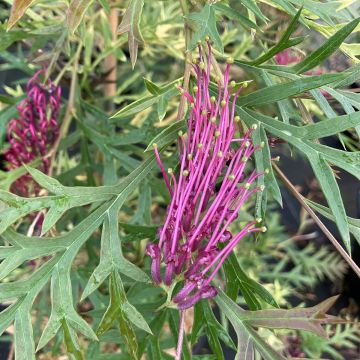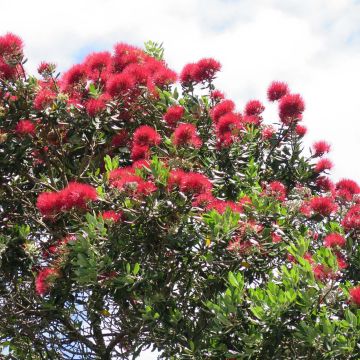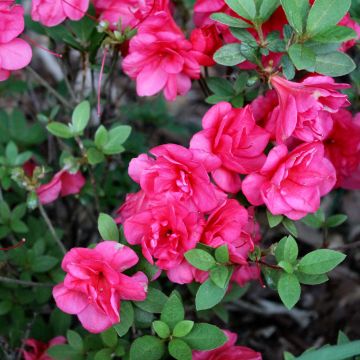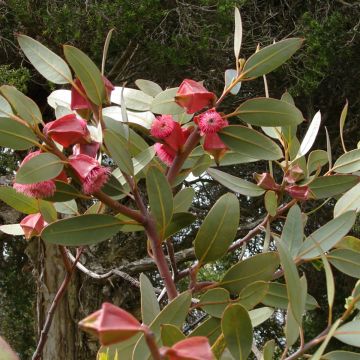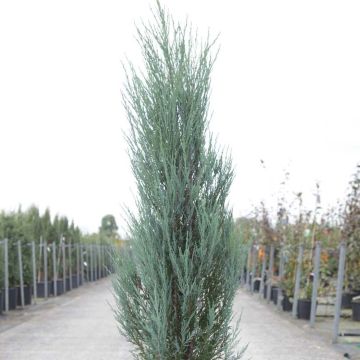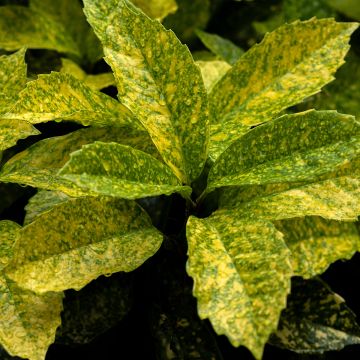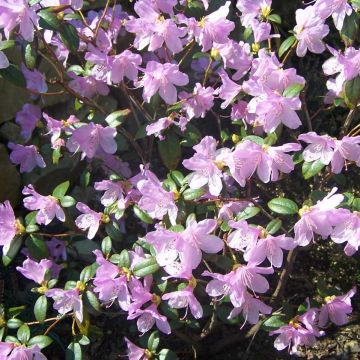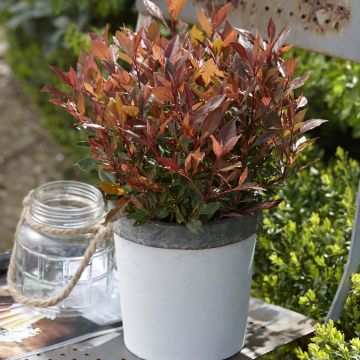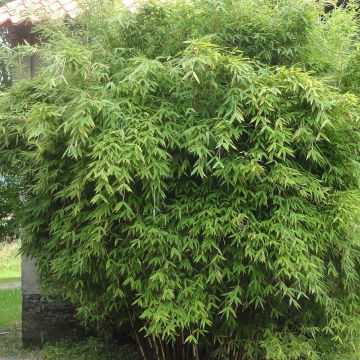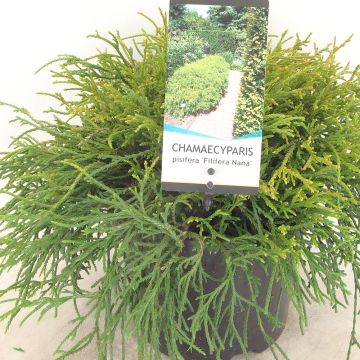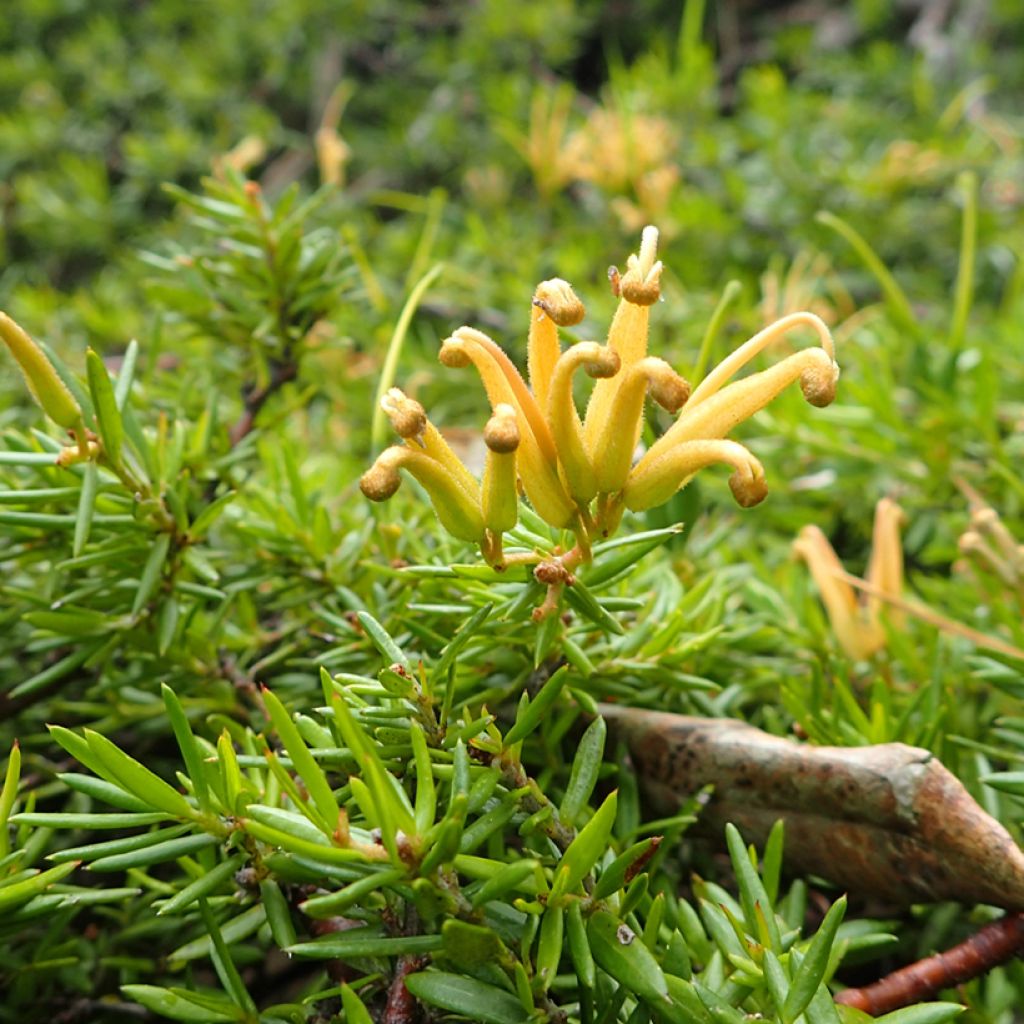

Grevillea prostrata Aurea
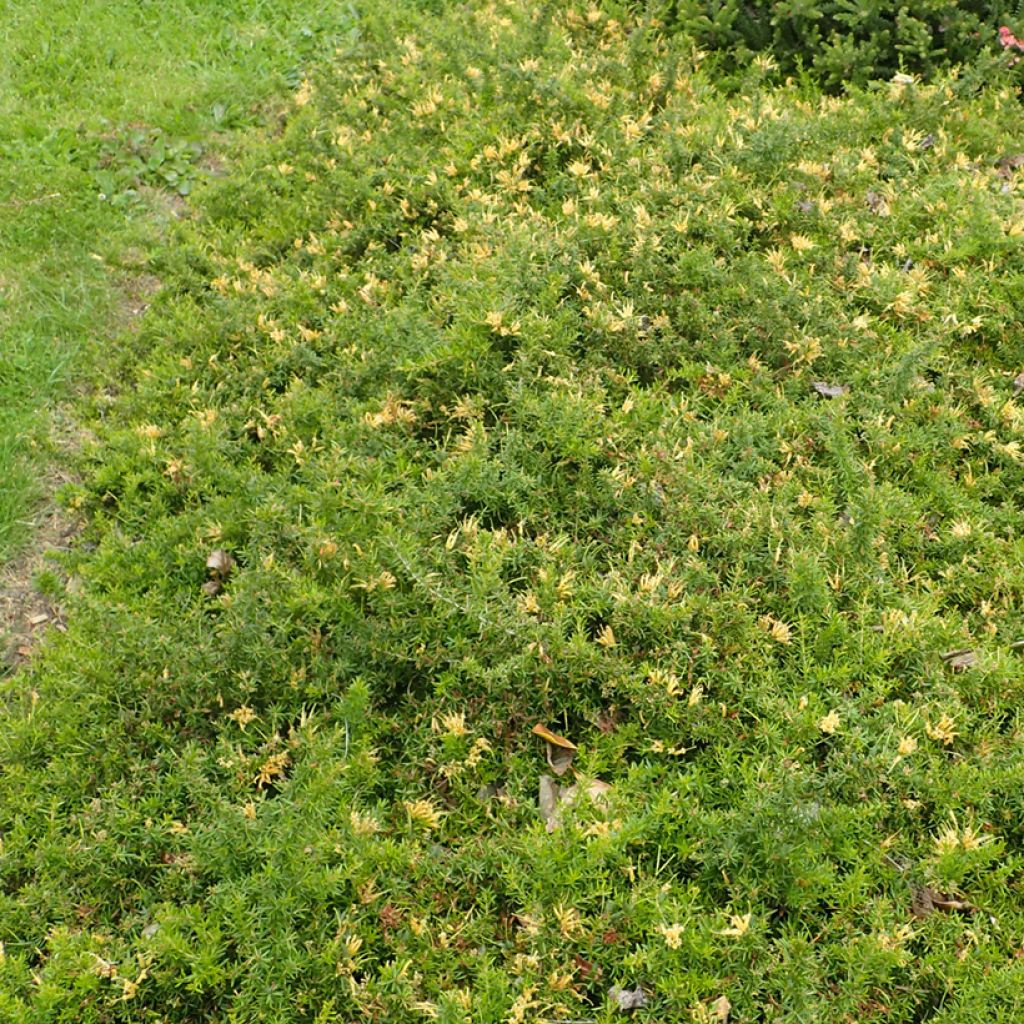

Grevillea prostrata Aurea
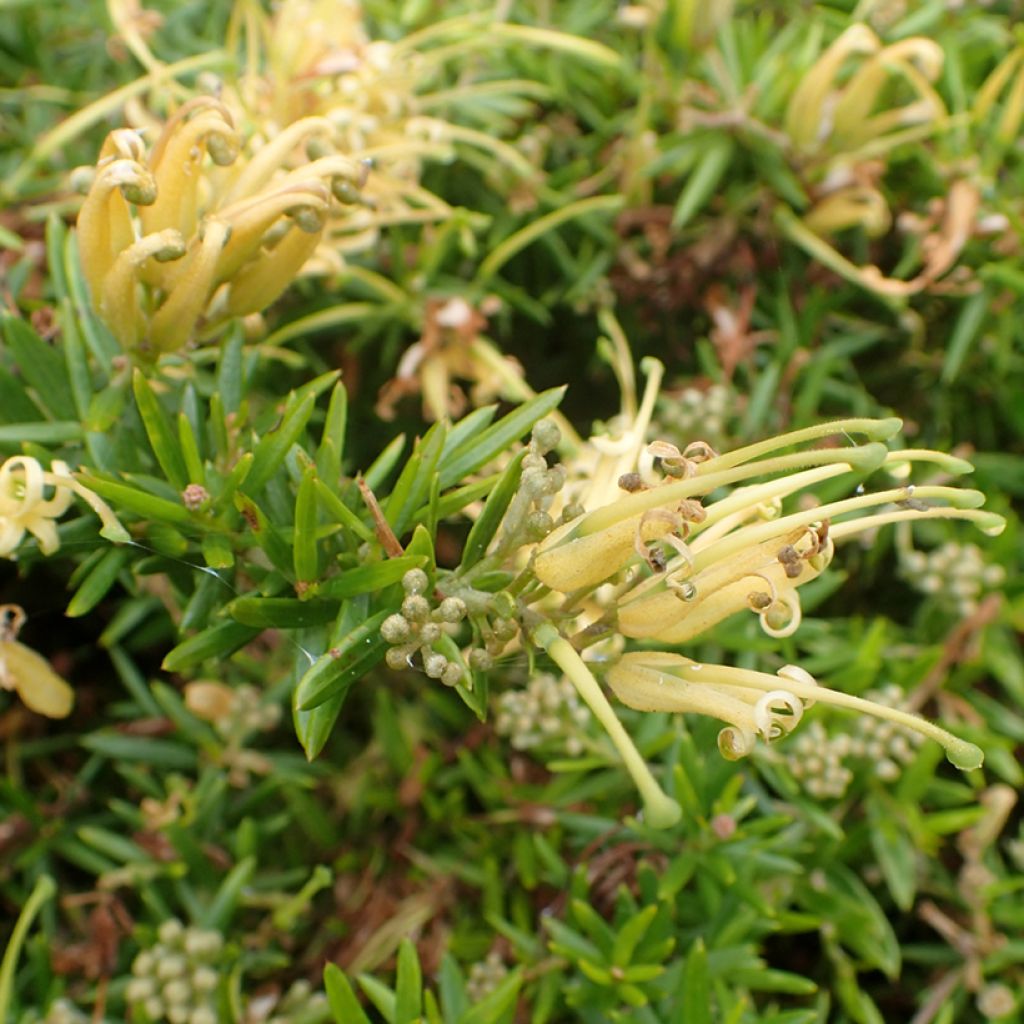

Grevillea prostrata Aurea
Grevillea prostrata Aurea
Grevillea prostrata Aurea
This plant carries a 24 months recovery warranty
More information
We guarantee the quality of our plants for a full growing cycle, and will replace at our expense any plant that fails to recover under normal climatic and planting conditions.
From €5.90 for pickup delivery and €6.90 for home delivery
Express home delivery from €8.90.
Delivery to Corse prohibited: UE law prohibits the import of this plant from mainland France to Corse as part of the fight against Xylella fastidiosa. Please accept our sincere apologies.
More information
Does this plant fit my garden?
Set up your Plantfit profile →
Description
Grevillea prostrata ‘Aurea’ is the yellow-flowered form of an Australian botanical species. This bush with moderate growth forms a superb ground cover in mild climates. Its dense vegetation consists of thin branches adorned with small narrow leaves of a beautiful light green that persist in winter. From March onwards, numerous clusters of sulphur-yellow flowers bloom for several months, sometimes even flowering again in summer. The inflorescences have a spider-like grace and their colour harmonises very well with that of the foliage. The bush grows in non-calcareous soil, low in phosphorus, well-drained and tolerates drought once well established, even tolerating some sea spray. However, it is sensitive to frost from -6°C and will therefore be best in coastal gardens, where it will gracefully carpet slopes and easily fit into a rockery or the foreground of a flower bed.
With around 250 species, the Grevillea genus is the most prolific within the Proteaceae family, which comprises nearly 80 species. It includes highly diversified forms, ranging from low-growing shrubs to 50-metre tall trees, with many genera popular among garden enthusiasts, such as Leucadendron. The Grevillea genus, named in honour of Charles Francis Greville (1749-1809), one of the founders of the prestigious Royal Horticultural Society, is mainly found in its natural state in Australia, with a few exceptions spread across Papua New Guinea, the Celebes and New Caledonia.
Grevillea prostrata is a botanical species endemic to a small area in southwestern Australia, subject to a Mediterranean-type climate. In these conditions, it forms a low mat, not exceeding 10 cm in height and spreading about 1 m wide. The prostrate bush produces a relatively insignificant white and pale pink flowering. Grevillea prostrata 'Aurea' has a noticeably different appearance and proves more appealing from an ornamental point of view. Growing rapidly, it forms a spreading cushion rising to 40 cm, even 50 cm high, with a diameter of 1 m to 1.20 m 5 to 10 years after planting. Its habit is quite irregular, giving it a natural look that blends easily into a rockery. It forms numerous thin stems, greenish at their tips and browning as they turn woody. They are somewhat stiff, adorned with very narrow leaves, measuring 2-3 cm long and only a few millimetres wide, resembling those of rosemary or Westringia. This reduced leaf surface allows the plant to withstand drought well by limiting transpiration. Ending in points, the leaves are slightly prickly, but less so than those of Grevillea juniperina. From March onwards, the plant produces a typical flowering for the species in terms of flower design, tubular and with protruding pistils, giving them a truly aesthetic spider-like appearance. A distinctive feature of the variety is that the flowers take on a sulphur-yellow colour, unlike many other species that bloom in pink or red tones. The very ornamental flowering harmonises perfectly with the foliage and lasts until June, often flowering again in summer in mild climates. Moreover, the flowers are honey-producing, adding biodiversity interest to this decorative plant.
Well-suited to Mediterranean climates, Grevillea prostrata 'Aurea' will thrive in a rockery, where it will spread comfortably, or in an exotic-inspired flower bed. Plant alongside the stunning Coprosma 'Pacific Sunset', with its warm red hues contrasting with the light green of your Grevillea. In the background, place a Callistemon, the famous bottlebrush, with unmistakable brush-like flowers. A Lagerstroemia indica 'Black Solitaire Best Red' with its dark purple foliage and long-lasting bright red summer blooms will also be a good companion, and to create a strong foliage contrast, plant a Ceanothus impressus 'Cool Blue' alongside it. This Californian Lilac stands out with its dark green leaves variegated with cream, and in spring produces remarkable light blue panicles of flowers.
Report an error about the product description
Grevillea prostrata Aurea in pictures




Plant habit
Flowering
Foliage
Botanical data
Grevillea
prostrata
Aurea
Proteaceae
Cultivar or hybrid
Other Grevillea
Planting and care
Cultivation:
Grevillea is best planted in spring, after the last frosts. In a Mediterranean climate, however, planting in October is preferable to take advantage of winter rainfall. It prefers soil with an acidic to neutral pH, sandy, gritty, loamy, or slightly clayey, but very well-drained and not too rich. The presence of limestone in the soil causes yellowing of the foliage, chlorosis, which significantly weakens the bush to the point of death. This condition can be corrected by regular application of iron in its chelated form (sequestrene). In regions where the soil and subsoil are limestone, it is advisable to dig a large pit 60 cm in all directions, filled with ericaceous soil or peaty compost and non-limestone sand.
Grevilleas are drought-resistant plants once well established: monitor watering in summer during the first two years, this will become optional, or even unnecessary later on. In the ground, they appreciate a thick layer of mulch, but not placed too close to the crown. Use wood chips or grass clippings. Use fertiliser very low in phosphorus, as this can reduce the bush's drought resistance by destroying the thick root hairs that develop just below the soil surface. A fertiliser with an N-P-K type with proportions of 18-2-10 is well suited.
Insects and diseases:
Grevilleas may develop black leaf spots, caused by a rarely fatal fungus: a fungicidal treatment will eliminate it.
One may also observe collar rot, a deadly disease, also caused by fungi that thrive in warm, humid soil. Avoid burying the plant's collar to allow for better aeration. Refrain from watering too frequently in hot weather and let the soil dry out between waterings.
Phytophthora (cinnamomi), a disease similarly caused by a fungus, affects many plants in dry conditions. The parasite destroys roots during excessively rainy winters. The plant may suddenly wither in summer due to lack of water as a result of the destruction of part or all of its roots. Partial or total death of vegetation, or even entire branches in severe cases, can be observed. Prevention is crucial as the disease is nearly impossible to eradicate: ensure perfect soil drainage and remove dead or diseased parts.
Pruning:
Grevilleas tolerate annual pruning well, during their growth period or just after flowering. Trim the branches by a third of their length. A regularly pruned bush will be more branched and more floriferous.
Planting period
Intended location
Care
This item has not been reviewed yet - be the first to leave a review about it.
Evergreen shrubs
Haven't found what you were looking for?
Hardiness is the lowest winter temperature a plant can endure without suffering serious damage or even dying. However, hardiness is affected by location (a sheltered area, such as a patio), protection (winter cover) and soil type (hardiness is improved by well-drained soil).

Photo Sharing Terms & Conditions
In order to encourage gardeners to interact and share their experiences, Promesse de fleurs offers various media enabling content to be uploaded onto its Site - in particular via the ‘Photo sharing’ module.
The User agrees to refrain from:
- Posting any content that is illegal, prejudicial, insulting, racist, inciteful to hatred, revisionist, contrary to public decency, that infringes on privacy or on the privacy rights of third parties, in particular the publicity rights of persons and goods, intellectual property rights, or the right to privacy.
- Submitting content on behalf of a third party;
- Impersonate the identity of a third party and/or publish any personal information about a third party;
In general, the User undertakes to refrain from any unethical behaviour.
All Content (in particular text, comments, files, images, photos, videos, creative works, etc.), which may be subject to property or intellectual property rights, image or other private rights, shall remain the property of the User, subject to the limited rights granted by the terms of the licence granted by Promesse de fleurs as stated below. Users are at liberty to publish or not to publish such Content on the Site, notably via the ‘Photo Sharing’ facility, and accept that this Content shall be made public and freely accessible, notably on the Internet.
Users further acknowledge, undertake to have ,and guarantee that they hold all necessary rights and permissions to publish such material on the Site, in particular with regard to the legislation in force pertaining to any privacy, property, intellectual property, image, or contractual rights, or rights of any other nature. By publishing such Content on the Site, Users acknowledge accepting full liability as publishers of the Content within the meaning of the law, and grant Promesse de fleurs, free of charge, an inclusive, worldwide licence for the said Content for the entire duration of its publication, including all reproduction, representation, up/downloading, displaying, performing, transmission, and storage rights.
Users also grant permission for their name to be linked to the Content and accept that this link may not always be made available.
By engaging in posting material, Users consent to their Content becoming automatically accessible on the Internet, in particular on other sites and/or blogs and/or web pages of the Promesse de fleurs site, including in particular social pages and the Promesse de fleurs catalogue.
Users may secure the removal of entrusted content free of charge by issuing a simple request via our contact form.
The flowering period indicated on our website applies to countries and regions located in USDA zone 8 (France, the United Kingdom, Ireland, the Netherlands, etc.)
It will vary according to where you live:
- In zones 9 to 10 (Italy, Spain, Greece, etc.), flowering will occur about 2 to 4 weeks earlier.
- In zones 6 to 7 (Germany, Poland, Slovenia, and lower mountainous regions), flowering will be delayed by 2 to 3 weeks.
- In zone 5 (Central Europe, Scandinavia), blooming will be delayed by 3 to 5 weeks.
In temperate climates, pruning of spring-flowering shrubs (forsythia, spireas, etc.) should be done just after flowering.
Pruning of summer-flowering shrubs (Indian Lilac, Perovskia, etc.) can be done in winter or spring.
In cold regions as well as with frost-sensitive plants, avoid pruning too early when severe frosts may still occur.
The planting period indicated on our website applies to countries and regions located in USDA zone 8 (France, United Kingdom, Ireland, Netherlands).
It will vary according to where you live:
- In Mediterranean zones (Marseille, Madrid, Milan, etc.), autumn and winter are the best planting periods.
- In continental zones (Strasbourg, Munich, Vienna, etc.), delay planting by 2 to 3 weeks in spring and bring it forward by 2 to 4 weeks in autumn.
- In mountainous regions (the Alps, Pyrenees, Carpathians, etc.), it is best to plant in late spring (May-June) or late summer (August-September).
The harvesting period indicated on our website applies to countries and regions in USDA zone 8 (France, England, Ireland, the Netherlands).
In colder areas (Scandinavia, Poland, Austria...) fruit and vegetable harvests are likely to be delayed by 3-4 weeks.
In warmer areas (Italy, Spain, Greece, etc.), harvesting will probably take place earlier, depending on weather conditions.
The sowing periods indicated on our website apply to countries and regions within USDA Zone 8 (France, UK, Ireland, Netherlands).
In colder areas (Scandinavia, Poland, Austria...), delay any outdoor sowing by 3-4 weeks, or sow under glass.
In warmer climes (Italy, Spain, Greece, etc.), bring outdoor sowing forward by a few weeks.

































